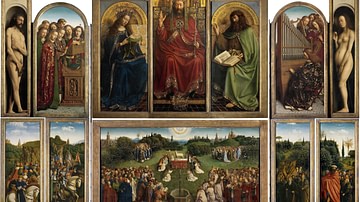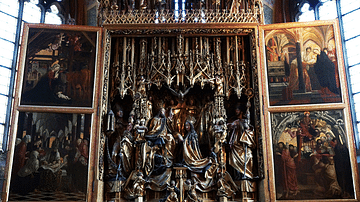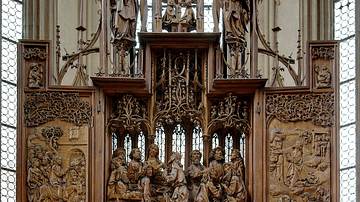Illustration
The Isenheim Altarpiece is an altarpiece sculpted and painted by, respectively, the Germans Nikolaus of Haguenau and Matthias Grünewald in 1512–1516 CE. It is on display at the Unterlinden Museum at Colmar, Alsace, in France. It is Grünewald's largest work, and is regarded as his masterpiece. It was painted for the Monastery of St. Anthony in Isenheim near Colmar, which specialized in hospital work. The Antonine monks of the monastery were noted for their care of plague sufferers as well as their treatment of skin diseases, such as ergotism. The image of the crucified Christ is pitted with plague-type sores, showing patients that Jesus understood and shared their afflictions. The veracity of the work's depictions of medical conditions was unusual in the history of European art.
Cite This Work
APA Style
Desjardins, V. (2020, July 08). Isenheim Altarpiece. World History Encyclopedia. Retrieved from https://www.worldhistory.org/image/12397/isenheim-altarpiece/
Chicago Style
Desjardins, Vincent. "Isenheim Altarpiece." World History Encyclopedia. Last modified July 08, 2020. https://www.worldhistory.org/image/12397/isenheim-altarpiece/.
MLA Style
Desjardins, Vincent. "Isenheim Altarpiece." World History Encyclopedia. World History Encyclopedia, 08 Jul 2020. Web. 31 Mar 2025.







